The African Centre of Excellence for Genomics of Infectious Diseases (ACEGID) is edging towards the completion of its landmark ACEGID Genomics Centre. Located at the heart of Redeemer’s University, Ede, Nigeria, this is the first state-of-the-art genome sequencing laboratory in Africa.
ACEGID currently operates from a building modestly adapted to suit the needs of the centre. The new Genomics Centre will house three high-tech laboratories (an extraction laboratory, a sequencing laboratory and a speciality laboratory), offices, workspaces, classrooms, a conference room and a gallery. Outside, a large roof covered with reclaimed (re-used) wood projects from the building, providing additional open space for outdoor classrooms, sidewalks and social interactions. The adjoining landscape is a blend of natural stones and vegetation.
As the World Health Organization and African Centre for Disease Control recently designated ACEGID as a continental reference laboratory for infectious diseases, the new Genomics Centre will greatly enhance our work. Commenting on how the new building will influence ACEGID’s work, the Director, Prof. Christian Happi said, “The new building is going to be an environment that is very refreshing, where people can really sit back and think. There is space there; we have enough space to put all our equipment. We are just here in a transient manner. We came here and we were given this building. Now, we are having our building. When we get there, people will be more relaxed, we will have more space, we will have more facilities to display and to use, and that for me is the most important thing.”

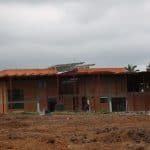
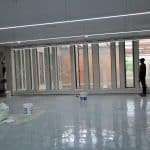
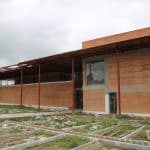
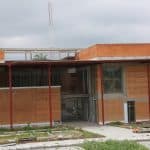
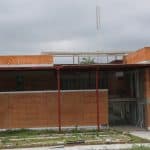

The centre is built to meet the Biosafety Level 3 (BSL-3) requirements. As a BSL-3 laboratory, the centre has features and maintain standard operating procedures that allow safe conduct of research on dangerous pathogens that are capable of causing deadly diseases. Among these are self-closing set of locking doors which provide restricted access to the laboratory area, standard personal protective equipment for researchers (gloves, eye protection, face shields, etc.), a system for sustained supply of fresh air into the laboratory, among others.
The conception, design and construction of the building succinctly capture the essence of an environmental friendly edifice. The building’s orientation is towards the direction of the wind, giving room to natural cooling from breeze. The walls are made from rammed earth (a mixture of local soil and a waterproofing mixture that make the walls resistant to outside weather conditions). The walls absorb heat during the day and release it at night, reducing the building’s energy requirements and thereby providing huge environmental benefits. Trees and shrubs that naturally grow within this region will be used to mitigate the hot and wet temperatures. The centre is expected to come into use before the end of 2020.
